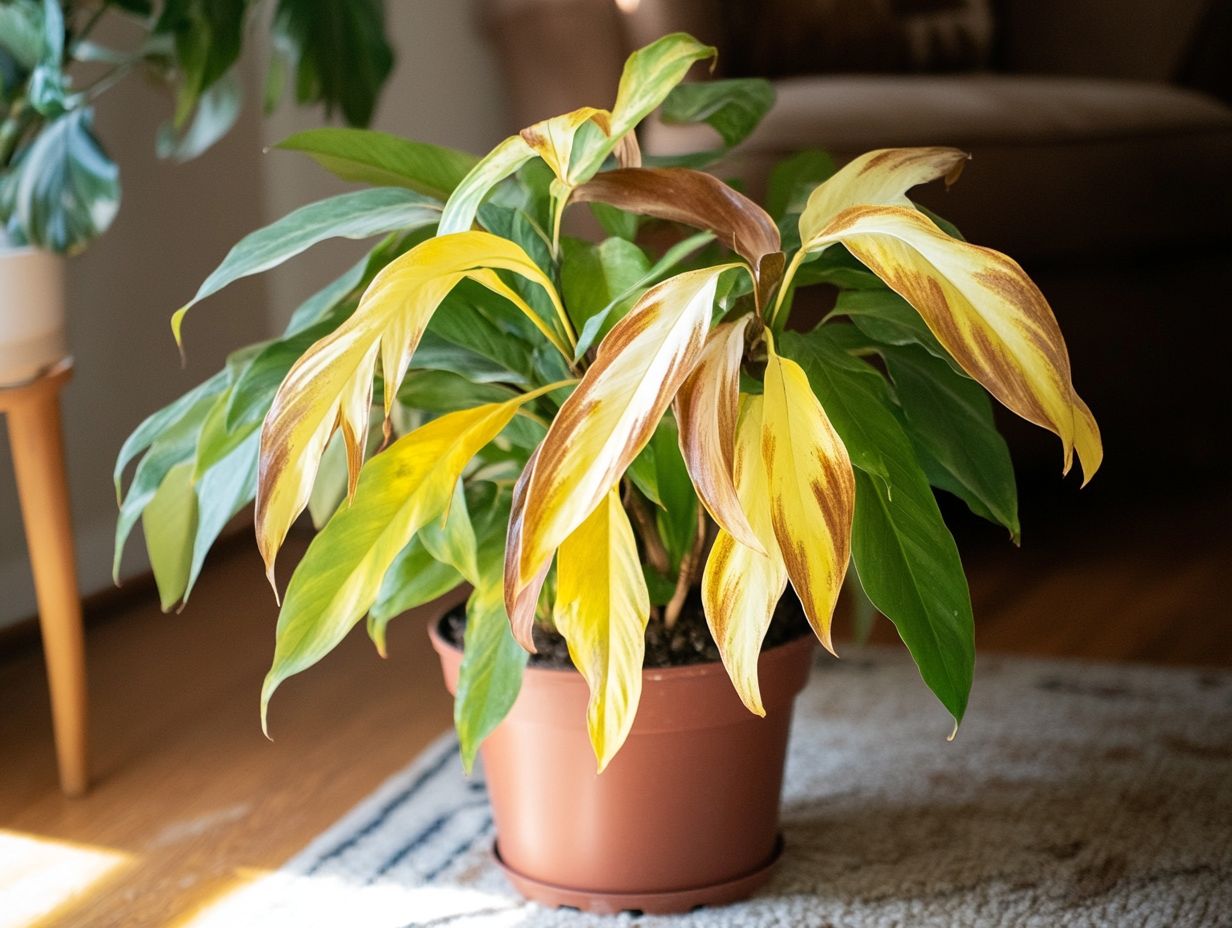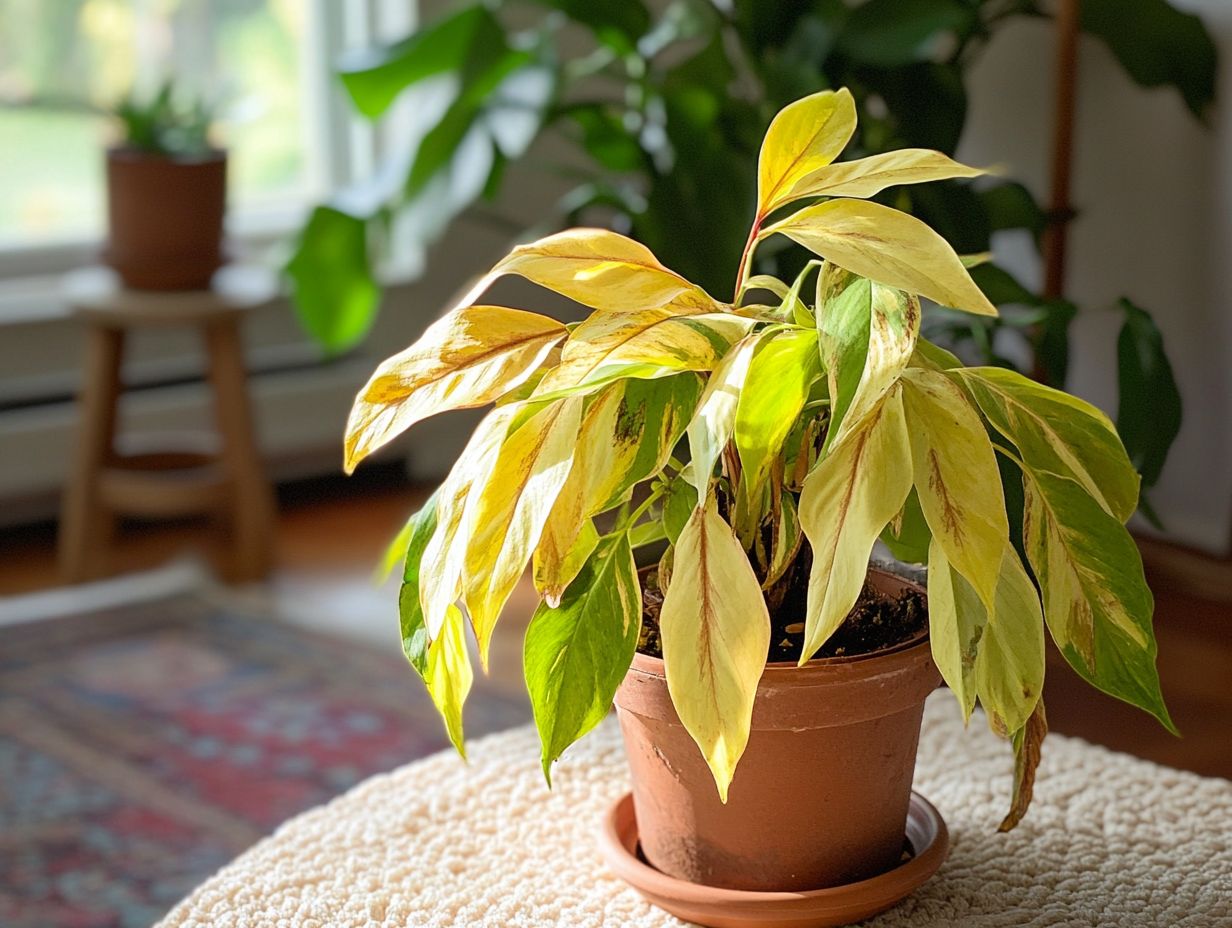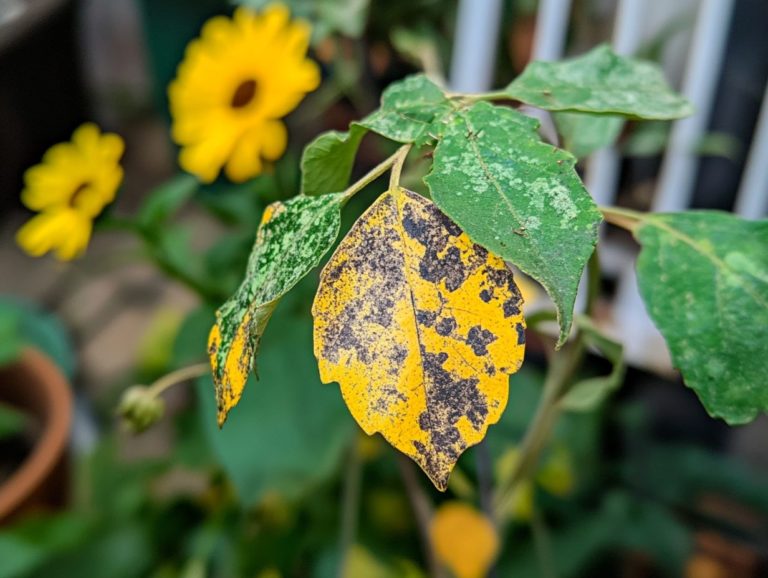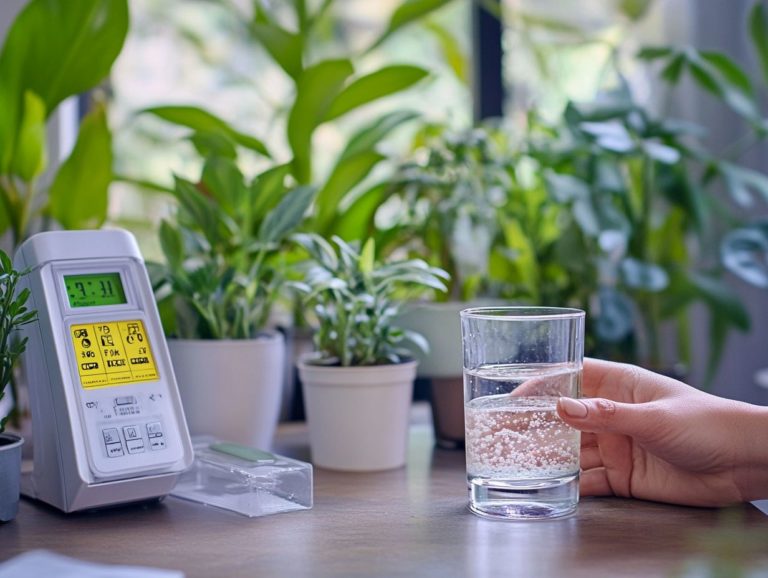Common Symptoms of Indoor Plant Shock
Indoor plants can bring you immense joy and tranquility, but they can occasionally fall victim to a phenomenon known as indoor plant shock or plant shock. This condition may leave your cherished greens looking less than their best, sparking concern for any dedicated plant parent.
This article delves into what indoor plant shock really is. You’ll learn how to identify the signs and symptoms to keep an eye out for, as well as the common causes behind it.
Additionally, you’ll discover practical tips for preventing transplant shock and effective strategies to revive your affected plants. Whether you’re a seasoned gardener or just beginning your journey as a plant enthusiast, grasping this essential aspect of plant care will empower you to keep your indoor jungle thriving!
Contents
Key Takeaways:

- Recognize the signs of indoor plant shock, such as wilting, dropping leaves, and discoloration, to act quickly and prevent further damage.
- Common causes of indoor plant shock include overwatering, incorrect lighting, and sudden temperature changes.
- Maintain healthy indoor plants by providing adequate care, such as proper watering, suitable lighting, and a conducive environment, to prevent shock and promote plant resilience.
Act now to ensure your indoor jungle thrives!
Understanding Indoor Plant Shock
Understanding indoor plant shock is essential for any dedicated plant enthusiast. This phenomenon is the stress response that houseplants endure when faced with significant environmental changes.
Factors such as transplanting plants, environmental shifts, and repotting plants can result in symptoms like wilting leaves, leaf drop, and stunted growth. By recognizing these signs, you position yourself to take proactive measures and provide the care your cherished plants need to thrive and recover. For more insights on addressing these issues, check out how to overcome indoor plant stress.
What is Indoor Plant Shock?
Indoor plant shock, often known as transplant shock, is a common stress response that your houseplants may experience during plant relocation or when repotted. This can lead to a temporary dip in their health and vitality.
You might notice a range of symptoms, such as wilting leaves, discolored leaves, and stunted growth. Different types of houseplants handle shock in their own unique ways. For example, bougainvillea may shed leaves, while peace lilies often droop prominently as a sign of distress. To effectively care for your plants, it’s essential to recognize stress signs in indoor plants, as orchids might surprise you by refusing to bloom or produce new growth during this unsettling period.
The primary causes behind indoor plant shock typically include sudden temperature changes, inconsistent watering, and fluctuations in light conditions. All of these can throw your plant’s natural balance off kilter. To help your plants recover, it’s essential to provide consistent care. Maintaining stable humidity levels and temperature, ensuring proper watering, and minimizing further disturbances will go a long way in easing their transition. Additionally, being aware of the signs of nutrient deficiency in indoor plants can further aid in their recovery.
Signs of Indoor Plant Shock
Recognizing the signs of indoor plant shock is crucial for ensuring timely intervention and proper houseplant care. Symptoms can vary significantly across different plant species. However, you ll often encounter leaf drop, wilting leaves, stunted growth, and discolored foliage.
Have you noticed these signs in your plants? Being attentive to these indicators allows you to address the issues promptly and nurture your plants back to health through effective care techniques.
Visual Cues and Changes in Plant Behavior

Observing visual cues and changes in plant behavior can offer valuable information about your plant’s health, particularly when spotting signs of transplant shock. You may notice altered growth patterns, shifts in leaf coloration, or a drop in overall vitality.
These indicators can become even more pronounced when seasonal changes or other environmental factors come into play. For example, if humidity levels fluctuate, you might see leaves curling or dropping, signaling distress. This is crucial for tropical varieties like dragon trees and Elephant ear.
Abrupt temperature changes can cause wilting or browning at the tips, reflecting the plant’s struggle to adapt. If your plants aren t getting enough light, you may witness slow photosynthesis, resulting in elongated stems or pale foliage.
By closely examining these shifts alongside the initial signs of transplant shock, you can develop a well-rounded understanding of how these conditions influence your plant’s immediate well-being and long-term growth potential.
Causes of Indoor Plant Shock
The causes of indoor plant shock can be quite complex, often stemming from various factors. You may encounter issues due to environmental changes, disturbances to the roots during transplanting, inconsistencies in soil quality, or sudden shifts in humidity and temperature.
Each of these elements can significantly impact a plant’s overall health.
Possible Triggers and Contributing Factors
Possible triggers for transplant shock include sudden changes in light levels, temperature fluctuations, and inconsistencies in your watering schedule. These can heighten a plant’s stress response.
For instance, if you move a plant abruptly from a shaded area to direct sunlight, that stark contrast can lead to leaf scorch and stunted growth. Temperature shifts, such as exposing your plant to cold drafts or hot indoor environments right after the transplant, can hinder its acclimatization process. To address these challenges, refer to this quick guide to common indoor plant issues.
Help your plant adjust by gradually introducing it to its new home, slowly increasing its light exposure over the span of a week. This acclimation process is vital. Also, maintaining a consistent watering routine is crucial; allow the topsoil to dry out slightly without letting it become completely dry. This balance keeps the roots from becoming too dry or waterlogged, which is essential for successful plant care and overall health.
Preventing Indoor Plant Shock
Preventing indoor plant shock starts with a deep understanding of the acclimation process, coupled with effective care techniques. This includes ensuring your plants receive adequate moisture and providing shade while gradually introducing them to new environments.
By doing so, you can significantly minimize stress and promote their overall well-being.
Tips for Maintaining Healthy Indoor Plants

Maintaining healthy indoor plants demands attention to several key factors, including optimal nutrition, appropriate humidity levels, using LED grow lights properly, and the occasional pruning of leaves to foster robust growth and stability.
Create the ideal environment by recognizing that each type of plant has its own unique requirements. For instance, tropical plants such as ferns flourish in higher humidity, so group them together to boost their growth! Choosing the right fertilizer, specifically tailored to plants like succulents, hibiscus, or orchids, can vastly improve nutrient absorption.
Utilizing LED grow lights not only mimics the benefits of natural sunlight but can also be fine-tuned according to your plants light preferences, ensuring each one receives adequate illumination while minimizing the risk of damage from excessive heat.
Treating Indoor Plant Shock
Effectively addressing indoor plant shock requires you to employ a series of care techniques designed to restore your plant’s vitality. This includes carefully checking moist soil, adjusting humidity levels to create a more favorable environment, and applying specific transplant shock treatment methods as needed, such as using rooting hormones.
Each of these steps plays a crucial role in nurturing your plant back to health.
Steps to Revive Shocked Plants
Reviving shocked plants requires a systematic approach that includes fine-tuning your watering schedule, providing appropriate support, and employing effective treatment methods to facilitate recovery.
Start by assessing the plant’s condition and identifying any signs of distress, such as wilting leaves or stunted growth. This evaluation will guide you in making the necessary adjustments to your care techniques.
Once you’ve pinpointed the issue, gradually changing your watering schedule can significantly alleviate stress. It s essential to keep the soil consistently moist without making it soggy, as overwatering can worsen the situation.
Utilizing supports like stakes or trellises can stabilize weakened stems, enabling the plant to regain its strength. You should consider adding a balanced nutrient solution to enhance recovery through improved soil health and to aid in recovering plants.
Frequently Asked Questions
What are some common symptoms of indoor plant shock?

Some common symptoms of indoor plant shock include wilting leaves, yellowed or browned leaves, drooping stems, slowed growth, and transplant shock symptoms like stunted or dying plants.
What causes indoor plant shock?
Indoor plant shock can happen due to several reasons, such as over or under watering, improper lighting, pest infestations, changes in temperature or humidity, repotting, and transplant shock.
How can I tell if my indoor plant is in shock?
Look for signs in your plant’s appearance and behavior to know if it s in shock. Watch for wilting, yellowing or browning leaves, drooping stems, and slowed growth. The plant may also be more susceptible to pests and diseases.
Can indoor plant shock be reversed?
In some cases, indoor plant shock can be reversed by identifying and addressing the cause. For example, if the shock is caused by overwatering, allowing the plant to dry out and adjusting the watering schedule can help the plant recover. Providing well-draining soil, along with adequate plant nutrition, is also essential for plant recovery.
How do I prevent indoor plant shock?
Act now to prevent indoor plant shock! Regular care and attention can make all the difference. Provide your plants with the proper care and environment. This includes watering them regularly and appropriately, providing adequate lighting such as LED grow lights, keeping an eye out for pests and diseases, misting plants occasionally, and avoiding sudden changes in temperature or humidity. Additionally, providing shade during hot days can support plant health and healthy growth.
Should I Remove the Affected Leaves of a Plant in Shock?
Deciding whether to remove leaves from a shocked plant depends on how severe the shock is.
If the damage is minor and only a few leaves are affected, removing them can help the plant recover.
However, if the shock is severe and most leaves are affected, it s better to let them stay on. The plant might not have enough energy to grow new leaves.
If the plant has experienced root ball damage, follow recovery tips. Ensure the right conditions for plants like the Elephant Ear or Peace Lily to boost their chances of survival.






